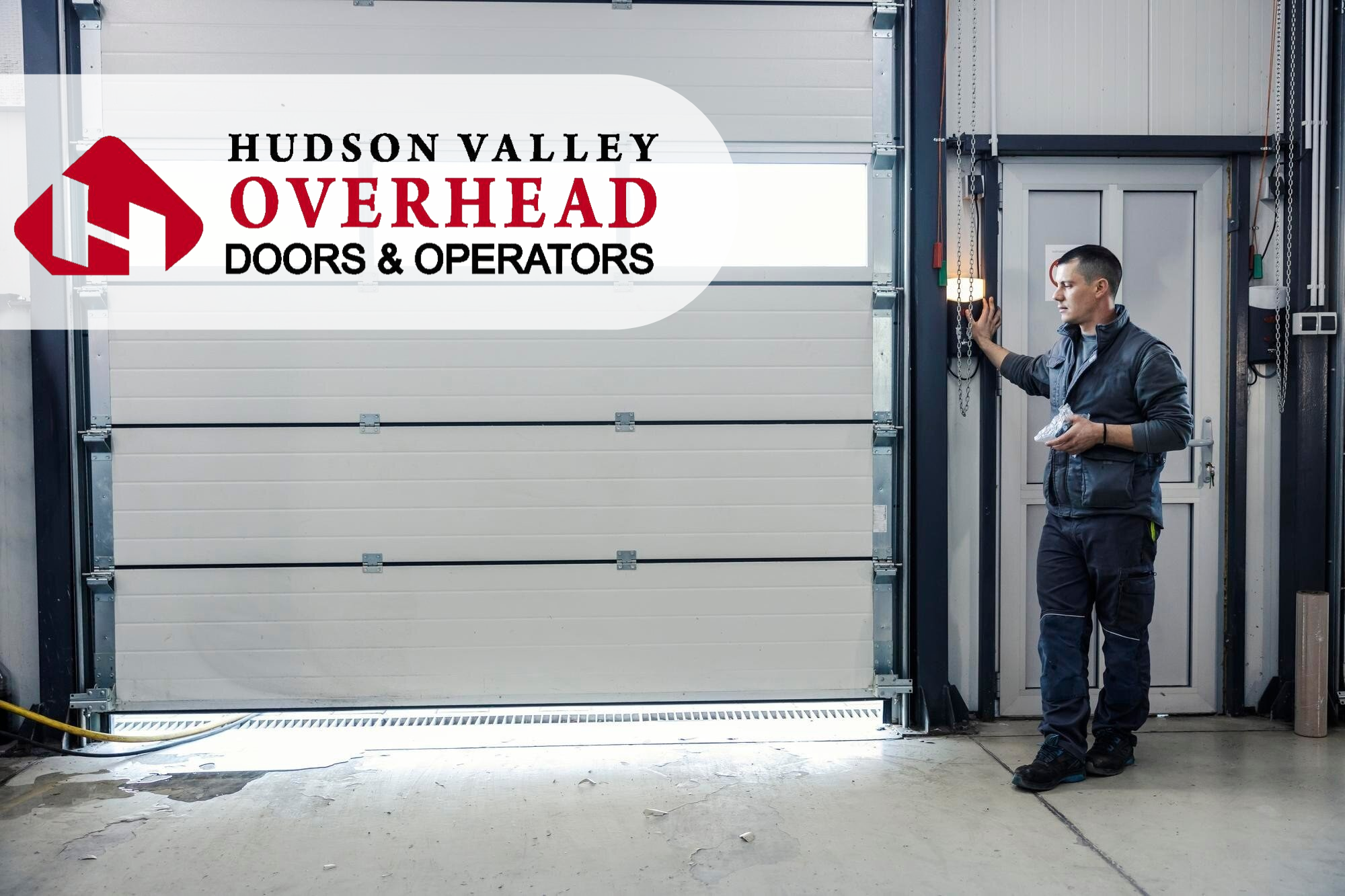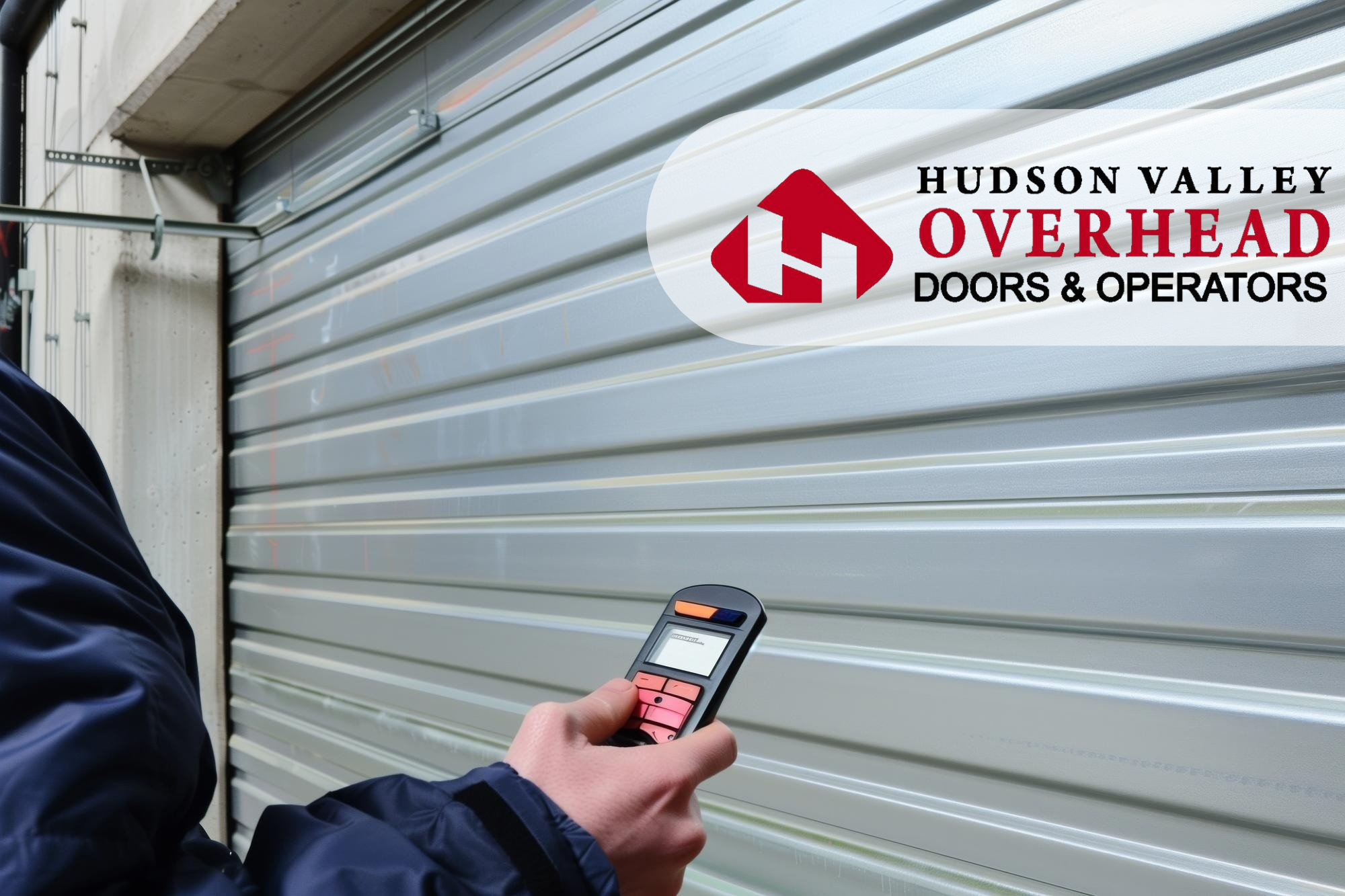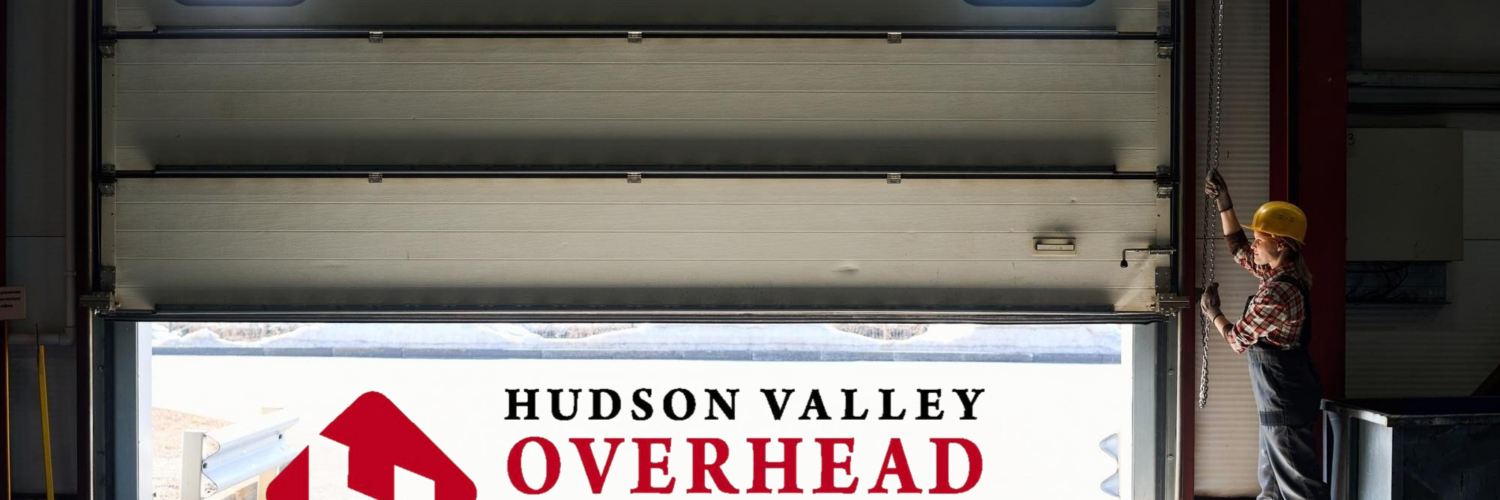The Overlooked Element of Commercial Safety Planning
Commercial and industrial facilities often have robust protocols for fire safety, security systems, and workplace hazard prevention. However, roll-up gates for commercial properties remain a frequently underestimated component of building safety, despite their critical role in day-to-day business operations. While managers may focus on high-profile systems such as alarm networks or sprinkler installations, the condition and functionality of these gates can directly influence both operational efficiency and workplace safety outcomes.
In high-use environments such as warehouses, retail loading zones, and secure storage facilities, garage doors function as both operational infrastructure and safety-critical equipment. They often serve as the first and last point of contact in the movement of goods, dictating the pace of deliveries, loading, and storage. Well-maintained roll-up gates for commercial properties provide smooth operation that minimizes delays, prevents vehicle collisions, and reduces the risk of mechanical malfunctions that could lead to costly downtime. On the other hand, neglected or poorly maintained gates can cause sudden failures, trapping inventory, blocking access for emergency services, or even causing physical harm to employees and visitors.
One often overlooked factor is the integration of garage doors into a facility’s overall security posture. In many industries, these gates double as a barrier against theft or unauthorized entry, especially in locations where after-hours storage of high-value items is necessary. Ensuring that roll-up gates for commercial properties are structurally sound, compliant with safety regulations, and equipped with modern locking or automation systems can provide an additional layer of defense that complements surveillance cameras and alarm systems.
Hudson Valley Overhead Doors & Operators, recognized in the Hudson Valley region for technical expertise, stresses that these structures should not be treated as “set-and-forget” equipment. Instead, they should be part of a structured maintenance plan that includes visual inspections, lubrication of moving components, tension adjustments, and the replacement of worn safety sensors or counterbalance systems. The company notes that regular inspections and compliance checks can significantly reduce risks of injury, equipment failure, and operational downtime.
Moreover, proactive maintenance of garage doors has measurable benefits beyond immediate safety. It can lead to lower insurance premiums, as insurers often factor safety equipment reliability into their risk assessments. It can also contribute to improved employee morale, since a well-maintained facility signals a company’s commitment to the well-being of its staff. In competitive industries where delivery schedules and operational continuity are crucial, preventing a single unplanned outage of a loading bay door can mean the difference between meeting or missing a key client deadline.
By integrating the care and monitoring of roll-up gates for commercial properties into the broader scope of commercial safety planning, businesses can safeguard not only their assets and personnel but also their reputation for reliability. This holistic approach positions the facility to operate more efficiently, comply with industry regulations, and respond more effectively to unexpected events.
Why Safety Inspections Matter for Commercial Garage Doors
Risk Reduction in High-Traffic Environments
In facilities where doors may open and close dozens of times daily, components such as torsion springs, lifting cables, tracks, and automated openers are subjected to heavy wear. This high-frequency usage accelerates the breakdown of moving parts, especially in climates with temperature fluctuations or exposure to dust, moisture, and corrosive elements. Even minor mechanical issues can lead to erratic operation, potentially endangering staff, customers, or vehicles, and in some cases, causing significant operational delays.
Routine inspections are essential because they allow for early detection of conditions that, if left unaddressed, can escalate into costly and dangerous failures. Common risk points include:
- Worn or frayed cables that could snap under tension A sudden cable break can cause uncontrolled door movement, posing a serious hazard to anyone nearby and potentially damaging surrounding equipment or inventory.
- Misaligned tracks causing derailment risk Track misalignment can result from accidental impact by forklifts or delivery trucks. This not only increases strain on the opener mechanism but can also cause the door to jam, leaving critical access points unusable.
- Malfunctioning safety sensors failing to detect obstructions Defective sensors compromise automated door safety systems, allowing the door to close on people, products, or vehicles. Regular sensor testing ensures compliance with safety standards and prevents avoidable injuries.
Beyond these immediate hazards, preventive maintenance also extends the lifespan of key components. For example, lubricating torsion springs reduces friction wear, while periodic tightening of track hardware prevents gradual loosening that can lead to alignment problems. Facilities that adopt structured maintenance schedules such as quarterly or biannual service plans are better equipped to manage heavy-use demands without sacrificing safety.
In high-traffic environments, every unplanned outage or repair can cascade into logistical delays, customer dissatisfaction, and increased labor costs. By prioritizing routine inspections and timely repairs, businesses not only reduce safety risks but also protect their operational continuity and bottom line.

Compliance With Safety Codes and Standards
In New York State, the International Code Council’s building regulations include provisions for proper installation and maintenance of overhead and rolling doors (ICC New York Codes). These codes outline specific requirements for structural integrity, operational safety features, and periodic inspections, ensuring that all mechanical and automated components meet industry-recognized benchmarks. For facilities with high-traffic entry points, these standards help minimize the risk of operational failures and workplace injuries.
For commercial property owners in Dutchess County, adherence to these garage door safety standards is essential not only for occupant safety but also for insurance coverage. Many insurance carriers require documented proof of compliance as part of their underwriting process, and failure to meet ICC New York Codes can result in denied claims or higher premiums. In addition, noncompliance may lead to penalties from local building authorities, creating both legal and financial setbacks for the business.
Compliance is not a one-time event at installation; it is an ongoing responsibility. This includes:
- Verifying that torsion springs, lifting cables, and tracks meet load-bearing specifications outlined in the ICC New York Codes.
- Ensuring safety sensors and automatic reversal systems function according to manufacturer and regulatory guidelines.
- Scheduling inspections by certified technicians who can document findings for both regulatory and insurance purposes.
Incorporating these safety code requirements into routine maintenance not only protects the physical integrity of roll-up gates and overhead doors but also demonstrates due diligence in protecting employees, customers, and assets. By aligning operational practices with ICC New York Codes, Dutchess County commercial property owners can reduce liability exposure, extend equipment life, and reinforce their reputation as responsible operators.
The Role of the Safety Reverse System
Critical Functionality for Accident Prevention
Modern commercial garage doors include safety reverse systems that automatically stop and reverse door movement upon contact with an obstruction. This feature is not only a convenience, it is a critical safeguard designed to protect employees, customers, and assets from injury or damage. According to the U.S. Consumer Product Safety Commission (CPSC), improperly functioning safety features are a leading cause of preventable injuries, particularly in facilities with high pedestrian or vehicle traffic near loading and unloading zones.
Regular testing often referred to as safety reverse system testing ensures these mechanisms work as intended. This involves placing a solid object, such as a wooden block, in the door’s path and confirming that the system responds instantly. Failures in these systems can result from sensor misalignment, wiring damage, or worn mechanical components, all of which can develop gradually through normal wear and tear or suddenly due to impact or environmental factors.
Beyond the immediate safety concerns, malfunctioning safety reverse systems can create compliance issues. OSHA and ICC building codes require that automated overhead and rolling doors maintain operational safety features at all times. A faulty reversal system not only increases accident risk but can also lead to citations, fines, or shutdown orders from safety inspectors.
Environmental and Seasonal Factors Affecting Door Safety
Cold Weather Performance Issues
In Dutchess County, seasonal temperature fluctuations can cause metal contraction, reducing the effectiveness of moving parts and altering the precision with which garage doors operate. Springs may lose tension, reducing the counterbalance needed for smooth opening and closing, while lubricants can thicken, increasing friction in rollers, hinges, and tracks. Opener motors may also experience strain during winter months as they work harder to overcome these mechanical inefficiencies. In extreme cases, frozen moisture can seal bottom door panels to the ground, creating sudden operational hazards and risking damage to weather seals or motor gears.
Proactive measures to mitigate cold weather issues include switching to cold-resistant lubricants, insulating exposed mechanical components, and scheduling seasonal maintenance checks before the onset of winter. For high-traffic facilities, these preventive actions can ensure uninterrupted operations and avoid emergency repairs during peak business periods.
Humidity and Corrosion Risks
High humidity and precipitation contribute to corrosion on metal components, particularly for exterior roll-up gates for commercial properties. Corrosion can weaken load-bearing parts such as torsion springs, lifting cables, and brackets, leading to a higher likelihood of sudden mechanical failure. In addition to rust, moisture can infiltrate electrical systems, causing shorts or malfunctions in safety sensors, control boards, and opener motors.
Regular inspections allow for corrosion detection before it affects structural integrity. Protective strategies include applying anti-corrosion coatings, ensuring proper drainage near door tracks, and installing weather-resistant seals to minimize moisture ingress. For facilities near coastal or high-rainfall areas, increasing inspection frequency during wet seasons can greatly extend the lifespan of garage doors and prevent expensive component replacements.
By factoring environmental and seasonal influences into maintenance schedules, Dutchess County commercial property owners can strengthen both the reliability and safety of their overhead and roll-up doors. Addressing these conditions proactively reduces downtime, protects assets, and ensures compliance with safety standards year-round.
Fire Safety and Emergency Compliance
NFPA Standards
The National Fire Protection Association (NFPA) outlines requirements for fire-rated doors and egress systems designed to contain the spread of fire and protect evacuation routes. These standards apply to a range of commercial building components, including instances where commercial garage doors form part of fire barriers. In such cases, any operational defect such as incomplete closure, delayed response, or mechanical obstruction could compromise compliance and reduce the effectiveness of the fire-rated assembly.
For facilities in manufacturing, warehousing, or logistics, compliance with NFPA guidelines is not simply a regulatory checkbox; it is a critical factor in safeguarding life safety and minimizing property loss during fire incidents. Fire-rated doors, including overhead and roll-up models, must be tested and documented according to the inspection intervals specified by NFPA 80, which governs installation, maintenance, and testing for these systems.
Emergency Access and Egress
In emergency scenarios, garage doors must be capable of manual operation to allow occupants or emergency responders to move through the space if automated systems fail. This is especially important during power outages, mechanical breakdowns, or other critical events when reliance on electric openers is not possible. Garage door realignment or emergency service should be tested routinely to ensure smooth manual operation and prevent jamming.
Routine drills and inspections should include:
- Manual lift testing to confirm doors can be opened by hand without excessive force.
- Verification of release mechanisms so they disengage from the opener system instantly.
- Realignment checks to prevent binding that could slow evacuation or impede emergency response.
- Functional testing of fire-rated closures to ensure they meet NFPA-mandated drop speeds and sealing requirements.
Failure to maintain these functions not only risks noncompliance with NFPA codes but also increases liability exposure and potential penalties from local fire marshals. By integrating NFPA standards into regular garage door maintenance plans, commercial facilities can strengthen their overall emergency readiness and protect both occupants and assets.
Expert Insights from the Hudson Valley Region
Hudson Valley Overhead Doors & Operators reports common safety concerns identified during inspections across a range of commercial and industrial facilities in the Hudson Valley area. These recurring issues highlight the importance of incorporating thorough, documented maintenance into safety planning:
- Safety sensors positioned too high or low, reducing detection accuracy When sensors are misaligned, the automated reversal system may fail to detect smaller objects, pallets, or even a person in the path of the door. This can result in accidental impact and injury, particularly in busy loading zones.
- Loose or bent track assemblies creating derailment hazards Tracks that are out of alignment increase the likelihood of the door binding or jumping off its track entirely, which can cause significant downtime and pose a danger to anyone nearby.
- Faulty opener limit settings causing doors to close too forcefully Improperly calibrated limit switches may allow the door to shut with excessive force, damaging goods, vehicles, or the door itself. In some cases, this can even compromise compliance with safety codes.
- Worn counterbalance springs leading to uneven door movement When springs lose their proper tension, one side of the door may drop faster than the other, putting undue strain on the opener and creating a potential tipping hazard if the door derails.
These issues, left unresolved, not only compromise safety but can also result in costly business interruptions. Unplanned downtime may delay shipments, disrupt supply chain schedules, and require expensive emergency repairs. By addressing these common problems proactively, commercial property owners can maintain compliance, extend equipment life, and avoid the cascading costs of preventable failures.
For businesses in the Hudson Valley region, partnering with a provider familiar with local conditions, building codes, and high-use operational demands such as Hudson Valley Overhead Doors & Operators ensures that inspections are both technically thorough and regionally relevant. This approach combines industry expertise with an understanding of the specific challenges faced by facilities in Dutchess County and surrounding areas.
Proactive vs. Reactive Maintenance
Proactive commercial garage door maintenance provides tangible benefits over reactive repairs, especially in high-traffic commercial and industrial environments where reliability directly impacts productivity and safety. By addressing wear-and-tear issues before they escalate, businesses can avoid costly disruptions and extend the operational life of critical equipment.
Key advantages of a proactive maintenance approach include:
- Reduced emergency service needs Scheduled inspections and preventive adjustments reduce the likelihood of sudden breakdowns that require urgent, after-hours repair calls. This minimizes downtime and eliminates the premium costs often associated with emergency response.
- Extended lifespan of door systems Routine lubrication, spring tension adjustments, and track alignment checks help mechanical components operate smoothly, delaying the need for full replacements.
- Lower long-term maintenance costs While preventive service does require an investment, it typically costs far less than major overhauls or replacements triggered by neglected issues.
- Enhanced operational safety and reliability Consistent upkeep ensures that safety sensors, counterbalance systems, and emergency manual overrides remain in optimal working condition, reducing accident risk.
Warehouse garage door safety programs should integrate periodic inspections with documented maintenance logs for insurance and compliance purposes. Keeping detailed service records not only demonstrates adherence to safety standards but also supports claims processing in the event of damage or injury. Insurance providers often look favorably on businesses that can provide a paper trail of preventive measures, potentially lowering premiums and improving coverage terms.
For facilities handling time-sensitive operations such as logistics hubs, manufacturing plants, or retail distribution centers, proactive commercial garage door maintenance can mean the difference between smooth, uninterrupted workflows and costly operational setbacks. By embedding maintenance into the broader safety culture of the organization, companies protect their assets, employees, and reputation.

Regional Considerations: Dutchess County and Spencertown
Commercial properties in the Hudson Valley often combine modern facilities with older structures, each presenting its own set of safety and maintenance challenges. In historic towns like Spencertown garage doors, maintaining compliance while respecting architectural requirements can be particularly complex. Many older buildings were not originally designed for modern overhead or roll-up systems, which means retrofitting must be done carefully to preserve historical aesthetics while ensuring full adherence to current safety and building codes.
In such cases, consultation with specialists familiar with the region ensures both preservation and adherence to modern safety standards. Local expertise can help identify solutions such as custom-fabricated door panels that match historic facades, or low-profile automation systems that operate within space constraints typical of older structures. Additionally, contractors experienced with Dutchess County’s permitting processes and inspection protocols can streamline compliance efforts while avoiding costly delays.
Integrating Safety Checks Into Facility Protocols
A comprehensive safety inspection program should address both the mechanical and environmental factors that affect commercial garage door performance. Recommended inspection focus areas include:
- Mechanical integrity: springs, cables, rollers, and hinges must be checked for wear, tension accuracy, and alignment to ensure smooth, balanced, and safe operation of the door system. Springs should maintain consistent counterbalance tension to prevent uneven lifting or sudden drops. Cables must be free from fraying, corrosion, or stretching that could compromise load-bearing capacity. Rollers should rotate freely without wobbling or binding, as worn bearings can increase track friction and cause derailment. Hinges must remain tightly fastened and free from cracks, as weakened joints can cause panel misalignment and increase strain on the opener. Regular inspection of these components helps prevent unexpected failures, reduces repair costs, and extends the service life of commercial garage doors.
- Automation systems: opener motor performance, limit settings, and remote controls should be tested for consistent operation and responsiveness to ensure that commercial garage doors open and close smoothly under all operating conditions. Opener motors should be inspected for signs of overheating, unusual noise, or reduced lifting power, which may indicate worn gears or electrical issues. Limit settings must be precisely calibrated so that the door stops at the correct fully open and fully closed positions, preventing unnecessary strain on the motor and mechanical components. Remote controls and keypads should be checked for proper signal transmission and battery health, ensuring that operators can control door movement reliably from designated access points. Regular testing of automation systems not only improves efficiency but also supports compliance with safety standards by ensuring all automated functions perform as intended.
- Safety features: reverse mechanisms, photo-eye alignment, and obstruction detection systems need verification to ensure compliance with safety regulations and to protect employees, customers, and equipment from preventable accidents. Reverse mechanisms should be tested to confirm that the door automatically stops and reverses upon contact with an object, meeting the sensitivity thresholds outlined in industry safety codes. Photo-eye alignment must be precise so that the infrared beam remains uninterrupted, ensuring the door will not close if an obstruction is detected in its path. Obstruction detection systems, whether mechanical, infrared, or ultrasonic should be inspected for dirt, damage, or wiring issues that could impair functionality. Routine verification of these safety features not only maintains regulatory compliance but also builds confidence in the reliability of the door system during daily operations.
- Structural condition: track alignment, panel damage, and frame stability must be assessed to prevent binding, derailment, or collapse and to ensure that commercial garage doors operate smoothly under daily use. Track alignment should be verified to confirm that rollers move freely without rubbing or excessive friction, as misalignment can increase wear on moving parts and lead to sudden derailment. Panel damage such as dents, warping, or cracks should be addressed promptly, since compromised panels can affect weight distribution and put strain on hinges and lifting mechanisms. Frame stability must also be evaluated to ensure that the door’s supporting structure remains level, plumb, and free from corrosion or foundational shifts that could impair proper operation.
- Environmental resilience: track alignment, panel damage, and frame stability must be assessed to prevent binding, derailment, or collapse and to ensure that commercial garage doors operate smoothly under daily use. Track alignment should be verified to confirm that rollers move freely without rubbing or excessive friction, as misalignment can increase wear on moving parts and lead to sudden derailment. Panel damage such as dents, warping, or cracks should be addressed promptly, since compromised panels can affect weight distribution and put strain on hinges and lifting mechanisms. Frame stability must also be evaluated to ensure that the door’s supporting structure remains level, plumb, and free from corrosion or foundational shifts that could impair proper operation.
By incorporating these steps into a facility’s scheduled maintenance plan, property managers can meet garage door safety standards, comply with Dutchess County property security solutions requirements, and protect occupants from preventable hazards. Over time, a proactive, regionally informed maintenance strategy reduces liability, extends the service life of doors, and supports uninterrupted facility operations.





